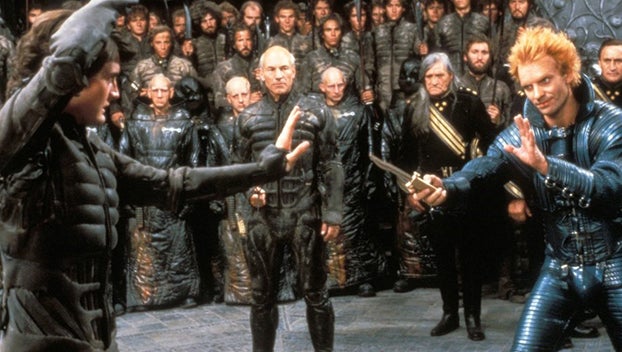MOVIES BY THE SLICE — A look at “Dune” 40 years later
Published 12:02 am Saturday, March 2, 2024
|
Getting your Trinity Audio player ready...
|
I recently revisited the theater for a 40th-anniversary screening of director David Lynch’s 1984 film “Dune,” the first cinematic adaptation of writer Frank Herbert’s 1965 novel.
Despite its initial box office failure, costing more than $40 million to make but earning only $31 million globally, the film garnered a cult following over the years.
Set in a future where civilizations battle for control of a desert planet’s precious resource, the film explores themes of power, politics and ecology.
The substance known as “spice” not only extends life but aids in space travel, making it highly sought after.
One of the film’s standout features is its star-studded cast.
Kyle MacLachlan, in his debut film role as Paul Atreides, leads alongside veteran actors such as Patrick Stewart, Max Von Sydow, Sean Young, Virginia Madsen, Sting (yes, the rock star) and many others.
MacLachlan would later become known for his work in Lynch’s TV series, “Twin Peaks,” and films like “Blue Velvet.”
The musical score by ’80s band Toto adds to the film’s atmosphere, though some may find the costumes and visual effects dated. Particularly, the makeup effects for Baron Vladimir Harkonnen, played by Kenneth McMillan, are unsettling and arguably overdone.
While the film’s sets are well-crafted, they may lack the grandeur of more modern adaptations. The use of pre-CGI effects, especially the force fields and blue screen effects, can come across as cheesy by today’s standards.
Director David Lynch has distanced himself from the film, expressing dissatisfaction with it and declining to create an extended director’s cut.
Despite its flaws, “Dune” still offers enjoyable moments, such as the intense knife fight between MacLachlan and Sting.
In conclusion, “Dune” is a film with strengths and weaknesses. It’s worth a watch, especially for fans of the sci-fi genre or those interested in its legacy.
I rate it 5 out of 10, acknowledging its place in film history while recognizing its shortcomings.
I hope you give this 40-year-old film a watch and let me know what you think about it. I would love to hear from you.
To reach Patrick Bennett, email bennettvision@gmail.com.







